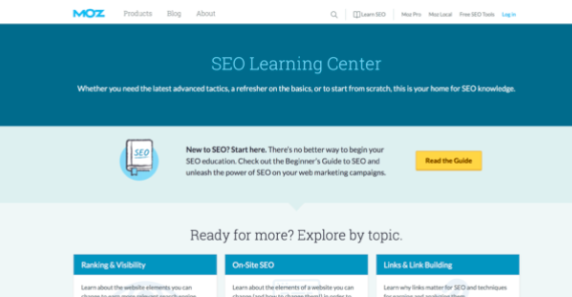Author: admin

How Blockchain Is Changing Customer Experience Through Identity & Trust
As we move into 2022, we will no doubt see an increasing number of businesses look to exploit the potential that blockchain technology offers and use it to enhance their customer experience (CX).
Blockchain is most commonly associated with cryptocurrency, but in recent months there have been a number of announcements from major companies looking at how blockchain can be used in different areas of the business. The technology offers the ability to share information via a distributed ledger, meaning it’s trusted by members of the network without the need for any middlemen – once information is on there, it cannot be altered or changed.
Blockchain Applications And Implications For CX:
As such, implementing blockchain technology into a company’s processes means the data it uses is more trustworthy. As well as this, because of its decentralized nature, it can enable customers to take control of their own data rather than remain at the mercy of companies that hold their data. For example, Walmart is using blockchain technology in order to improve food tracking and safety by making use of tamper-proof and transparent ledgers so customers can see where their food has come from. This allows people to choose whether or not they want to purchase certain products based on this information – so if you were worried about pesticide residues in your product, you might be concerned to learn that a product was handled by a supplier that experienced a breach in their food safety management system.
This gives more of an incentive for companies to protect customer data and make it transparent – if the data is already on a decentralized network, extensive security measures cannot be taken to keep the information away from prying eyes as this would render the whole concept useless.
It also allows customers to take control of their data and choose if they want certain information shared – for instance, it may be advantageous for some people to share some health data in order to receive tailored medical advice.
Companies can also use blockchain technology to create new types of loyalty programs that give the power back to the customer. With an increasing number of businesses experimenting with cryptocurrency, consumers could soon have a wide range of ways in which they can be rewarded for their spending habits, such as receiving discounts when shopping at different stores or earning coins by taking part in market research surveys or interacting with companies on social media. A company could even reward customers with coins based on how long they’ve been a member of the brand’s community – this would allow customers to accumulate their coins over time, before using them to pay for a product or service once its value had grown. Customers could even potentially exchange these cryptocurrencies with each other or use them in different ways outside of the brand’s ecosystem, depending on how creative companies are willing to get.
Advantages Of Using Blockchain For CX:
Blockchain offers a number of advantages when it comes to customer experience, such as:
- Full Transparency – companies are able to provide more transparency, as it’s easier for them to make their data trustworthy via blockchain technology.
- Stable Security – because of its decentralized nature, companies are better equipped against cyberattacks and there is no one point of failure with blockchain technology.
- Reduced Costs – using a distributed ledger means that the need for intermediaries is reduced or even eliminated altogether, which can potentially save businesses money in terms of transaction fees. This also has an impact on customer service, as staff may be able to deal with issues more quickly without having to wait on hold.
- Greater Convenience – customers have access to their own data so they can control how much information they want to share with brands, thus increasing the convenience of shopping online.
- New Forms Of Incentives – customers are rewarded for interacting with companies, which encourages them to remain loyal to brands that they trust and believe in. It also gives them more of an incentive to share their personal information.
- More Creativity – because blockchain technology enables greater interoperability within ecosystems, companies are able to create more creative products that can be used by multiple different stakeholders. For example, a customer might be able to use coins earned through one company on another brand’s platform or give these coins as gifts to friends or family members.
- Greater Insights – because blockchain allows for a more detailed audit trail, businesses are able to obtain better data about their customers and how they use their products or services.
- Easier Sharing Of information – it’s easier for companies to share information when there is a decentralized network behind them, as blockchain makes it easier to trust the data being shared by different stakeholders.
- Better Customer Service – having access to decentralized and accurate records means that staff can resolve issues quickly and efficiently and customers can go about their day without having to wait on hold for extended periods of time.
- More Personalization – the interoperability of blockchain makes it easier for brands to create products that are able to interconnect with other platforms, resulting in a better customer experience.
- New Business Models – businesses have access to cheaper transaction fees due to reduced intermediaries, which can enable new types of business models. Reduced costs allow companies to find ways around the “one size fits all” approach and offer more tailored services as a result.
- More Innovation – companies have the opportunity to create new business models that can unlock new markets. Because of this, they are able to experiment more with different ways of delivering their products and services which help them stay ahead of the competition.
Disadvantages Of Using Blockchain For CX:
On the other hand, there are some potential disadvantages in regard to the customer experience when companies utilize blockchain technology. For example:
- More Complex – the fact that blockchain is a relatively new and ambitious technology means that it can add complexity to businesses and make it harder for them to truly understand how this tech works. Another downside is that there aren’t many experts in this area when compared with something like artificial intelligence (AI) or robotics. This means that most employees won’t have much knowledge about what they’re selling and may not be able to explain anything beyond simple facts and figures.
- Scalability Issues – just like cryptocurrencies, there is a huge issue with scalability that needs to be addressed. Blockchain is not currently able to handle the number of transactions that companies like Visa and Mastercard can process on a daily basis, therefore making it difficult for them to use this technology as their main service delivery platform.
- High energy Consumption – by operating on a decentralized network, blockchain technology can cause high levels of electricity consumption which has an impact not only on the environment but also cost due to increased expenses. It will take some time before there are any breakthroughs in terms of increasing efficiency or finding alternative sources of energy for this form of tech.
- Lack of Regulation – because this is still a relatively new area of technology there are no industry tests or guidelines in place to protect consumers when utilizing blockchain’s capabilities. Even though there are some self-regulatory mechanisms currently in place (e.g. KYC), people should still remain wary when making financial decisions due to the uncertainty surrounding where their coins will end up if something happens to them (e.g. if they lose their password).
Industries Set To Benefit From The Blockchain:
There are numerous industries that could potentially benefit from utilizing blockchain technology such as:
Banking, Healthcare, Education, Retail, Real Estate, Entertainment, Gaming, Transportation, Energy, and Manufacturing.
A few businesses that already utilize blockchain technology:
There are a number of companies, both big and small, who have been leveraging blockchain to improve their business offering. These include Microsoft, Samsung, IBM, Maersk, Alibaba, Overstock.com, Walmart, Red Bull Media House.
How can digital service providers leverage blockchain technology to enhance their customer experience?
Some companies have even gone as far as using Ethereum’s ERC-20 tokens within their platform which allows them to create their own currency. This makes it possible for people to trade supplies, products, and services on one platform and easily exchange currencies with each other without having to go through an exchange.
There are also decentralized hedge funds that use the Ethereum network which gives investors more options in terms of where they put their money.
As you can see, blockchain is a very versatile form of technology and it has the power to make almost anything more efficient, secure, and streamlined. This is why experts believe that when fully implemented across society, it could be the foundation for a new model of economic and social organization.
It is still an emerging technology and it will take some time before we see the full potential of this incredible innovation. However, regardless of if companies use “private chains” or opt to utilize other decentralized peers to peer (P2P) systems like Ripple, it’s clear that this is the direction that companies are heading when it comes to their digital service offerings.
As A Business Process Outsourcing Company, Why Should We Care?
In short, blockchain is something that any kind of business that interacts with consumers should consider implementing into their service delivery model. This includes outsourcing companies who are looking to enhance their customer service experience by making it efficient, trustworthy, and quick.
Most companies will not be able to afford to develop or maintain their own Customer Support, or Back-Office teams which is why outsourcing their needs to a company like ours makes the most sense. We have extensive knowledge of industry standards as well as business process management methodologies that can help your company quickly integrate new forms of technology into your business model.
What are your thoughts on how blockchain can change the customer experience? Do you think that companies will adopt the technology in the near future or is it something that will take some time to develop? Let us know in the comments below.
This article was written collaboratively by Paul Pokotylo and Burak Turk from the Marketing and Business Development teams on behalf of LimTC.
Our mission is to provide you with the information you need on trending topics that we see will have an impact on Customer Experience with a focus on the technology involved. To stay up to date on subjects that interest you, follow us on social media and check out our blog.

Omnichannel: A Definition and, Discussion on Customer Service
At the end of the day, customer experience is king. What does that mean? It means that a company’s ability to connect with its customers in a meaningful way will determine whether they’re successful or not. In this blog post, we’ll discuss how Customer Support can be an omnichannel service – meaning it spans all channels from web chat to social media and more.
The best companies know this and invest in customer support by providing multiple ways for people to contact them—from phone call centers to live chat on websites. In order to provide excellent customer support across all channels, companies need a unified view into these interactions so they can proactively resolve issues before they escalate into bigger problems. This blog post discusses why customer support needs a unified view and how Customer Support can be an omnichannel service.
What is omnichannel?
Omnichannel is the idea of using multiple channels to provide customer service and support. Customer service should be available anytime, anywhere through social media, email, chatbots, phone lines – anything you can think of! Customer Support Softwares helped companies adopt omnichannel strategies with their customer service departments by providing them with all the tools needed to offer excellent customer service 24/hours without having to worry about which channel their customers are on when they reach out.
The term “omnichannel” refers to a business model where consumers engage and interact with brands across different platforms (such as mobile phones or tablets) and devices (for example an app vs a website). This means that there needs to be balanced coordination of resources, platforms, and channels to ensure that the customer journey is smooth across all touchpoints.
Omnichannel Customer service is an approach where businesses communicate with consumers on multiple different communication channels simultaneously in order to offer support whenever it’s needed without difficulty switching between them. For example: if someone calls into your business while checking out your website then talking about what they’re looking into buying in real-time.
How does it affect customer service?
Customer service has changed a lot over the years. When we think of customer support, Software companies offer an automated way to manage all your social media accounts and even chatbots! This means that you can now provide excellent support for customers without worrying about which channel they’re on when reaching out.
Omnichannel Customer Service is defined as providing personalized interactions across different channels simultaneously with the goal of improving conversion rates while preserving brand loyalty. Omnichannel Customer Service provides unique opportunities for brands to go beyond traditional CSM strategies by leveraging technological advancements in order to deliver consistent experiences throughout their entire organization. By using multiple communication channels at once, businesses are able to better serve users who may need help immediately (for example customers who are having an issue with their product) while still keeping customers happy and engaged.
Why are some companies hesitant to adopt it?
Some companies are still hesitant to adopt omnichannel Customer Service. Customer service is already an area where Customer Experience (CX) plays a huge role. However, with the adoption of omnichannel Customer Service, it can become even more difficult to ensure that your company meets all customer needs without losing sight of what’s most important – quality control.
Omnichannel Customer Service requires companies to adopt new strategies and implement new technologies in order for them to achieve their goals properly. Organizations must also be willing to integrate these efforts into existing products or services as well as internal processes which means that you will need buy-in from everyone involved including management, marketing, sales, support, etc.
In fact, there are many challenges that come along with this approach such as technology integration issues; getting everyone on board; integration issues between multiple platforms/channels; not being able to ensure quality control or consistency across all channels; etc.
The most common challenge that comes with omnichannel Customer Service is that you can’t achieve the same level of quality control across all channels. Having a support chat on your website which allows you to look up at someone’s account history, for example, may not be as effective when it only takes one customer service agent per day to respond back in order to maintain consistency and ensure high-quality responses.
As such, some brands are hesitant about adopting this approach because they don’t want their brand positioning or product differentiation strategies being undermined by poor Customer Experience (CX).
On the other hand, however, there are increasing numbers of companies who have started implementing an omnichannel strategy in their Customer Support department in order to improve Customer Experience (CX) while also providing more personalized experiences to their customers.
How to overcome these challenges?
There are several strategies that can be applied in order to overcome the challenges associated with omnichannel Customer Service:
– Customer service training and development on different channels;
– Organizational alignment across all departments;
– Technology integration (for example, Salesforce’s Customer Success Platform which allows companies to manage every customer interaction through a single platform); etc.
If your company wants to implement an Omnichannel Customer Service strategy but doesn’t know where or how they should start, Customer Success Platforms (CSP) is a great option to consider as they allow organizations to manage Customer Experience (CX) easily and effectively.
Using CSP, companies can collect data from different channels such as social media; email marketing software; etc., in order to provide a better Customer Experience across all of them so that each customer feels heard no matter what communication channel they use.
In addition, omnichannel Customer Service also creates an opportunity for businesses who want to expand their brands or develop new products by providing users with consistent service experiences wherever it might be least expected.
In the end, Customer Experience (CX) is key to any business’s success and omnichannel Customer Service can help companies create a Better Customer Experience in order for them to maintain customer loyalty while also increasing brand awareness.
The benefits of adopting an omnichannel approach for customer support:
– Customer Experience (CX) is improved;
– Customer Loyalty and Brand Awareness are increased;
– Customers’ overall satisfaction with your products or services will increase.
Final Thoughts on why more companies should consider implementing an omnichannel strategy for their customer service department It is estimated that up to 40% of the Customer Service inquiries are coming from mobile devices which means that there is a high demand and need for brands to have Customer Support channels available via these platforms. So, if you were hesitant about adopting this approach in order to improve your Customer Experience (CX), now may be a good time as any! If not, don’t worry because it’s never too late either – just take note of what problems or challenges might arise from doing so then go from there.
We’re still early on in our omnichannel Customer Service journey, there’s no doubt that we’ll see a lot of growth with time due to its ability to provide a better Customer Experience (CX), improved business-to-customer relationships, and expand brands into new markets where the company may not have had access before – all by simply providing users with consistent service experiences wherever they might be least expected.

10 Customer Service Tips For Delivering A 5-Star Experience
Your company is only as good as the customers it serves. A customer service department that isn’t on its toes can be a significant drag on your bottom line. If you want to deliver a 5-star experience, then you need to know these 10 tips for success.
Here are some quick pointers on how to make every phone call count:
1) Listen carefully and determine what your customer needs are.
Don’t make assumptions about what your customer wants. Always listen carefully and determine what your customer needs are. By getting to the root of the problem, you can solve issues faster without disrupting your normal workflow.
Don’t put other customers on hold while servicing a current client: If you’re helping one customer, treat that customer like your only customer. If you have multiple people in the queue, get everyone taken care of as quickly and efficiently as possible. (I know it seems obvious – but this is actually one of the most common mistakes.)
2) Let them talk.
Never interrupt the person who called in with questions or concerns. It can be frustrating when you’re talking to someone on the phone and they keep cutting you off or don’t let you fully explain your concerns. If a customer is rambling about an issue, resist the urge to interject with clarifying questions because this will just slow down the process. Give them a chance to fully explain the issue first.
3) Avoid using jargon
Even though you may be in the right, it’s important to acknowledge your customer’s experience.
If you lose your composure when speaking with a client and use words or sounds that they don’t understand, then you can create an even bigger problem for yourself. Don’t use jargon or technical terms unless absolutely necessary (and if you do, explain them in layman’s terms). Also, be patient with the customer because they may not understand all the details of your company’s products or services.
4) Offer solutions if possible, but don’t promise anything beyond your control
Let the customer know that you’re going to do everything in your power to fix their issue or resolve their problem. If you have a solution, then let them know. If not, then express empathy towards their situation and commit to researching an answer as soon as possible. However, try not to overpromise because it can lead to significant issues later on if you can’t deliver what you’ve promised. If there was a major mistake on your end that caused this current situation, then it’s best to admit that. The customer will appreciate your honesty and may forgive you for any missteps. If the customer makes a request that doesn’t align with your company goals or policies, then clearly explain why it can’t be done.
Let the customer know that you’ve taken steps to prevent similar problems from occurring in the future.
5) Keep track of key points in case there is a follow-up
A customer’s opinion of your brand is based on the entire experience. Not just the interaction with one employee, but rather the collective interactions throughout a particular problem. In order to keep improving your service, you should write down key information in case there is a follow-up call. This will make it easier for everyone involved.
You’ll want to make sure that both of your notes are consistent in order to avoid additional mistakes. If there is a sequence of events or certain details that were mentioned, then speak them back so the person on the other line knows that you fully understand the issue. You’ll also want to be concise when documenting a customer’s issue because it can save them time and headaches in the future if they have to retell their story for your company’s records.
6) Measure And Reward The Right Things
The key to effective customer service is being able to measure what works and what doesn’t. This includes measuring how long it takes your customers to reach a representative, whether or not they return if there’s another problem, or if you’re able to fix their issue the first time. Make sure you’re focusing your customer service efforts on the metrics that will improve your business such as a low number of return interactions or faster-than-normal problem resolution. You also want to look at the positive effects, such as customers who come back even when there are no issues.
Doing this will ensure that you’re rewarding the right things and address performance problems before they become commonplace.
7) Be emphatic, not sympathetic
Saying “that sounds like it must have been really hard for you” can come across as unsympathetic while saying “I totally understand how frustrating that must have been for you,” conveys empathy. If the solution was something out of their control, then avoid phrases like “there was nothing we could do,” and instead say something along the lines of “we’re sorry we couldn’t resolve this issue.”
Express empathy towards the problem at hand, not just with words, but also the tone of voice. Let them know that you are genuinely trying to help them.
8) Fix problems as quickly as possible
Speed is key when it comes to customer service. Problems can quickly escalate into a PR disaster for your company, especially if you have a large audience and even more so when reporters are involved. It’s good practice to follow up with customers who’ve had problems within 24-48 hours, but try to fix the issue as quickly as possible. If it was something you could have controlled or done better, then show the customer that you’re taking their experience into consideration and going to make changes where appropriate.
9) Be sincere in your desire to help.
Your tone when speaking with a customer can make or break the entire interaction. Avoid sounding boring, disinterested, or robotic, and keep it sincere. In other words, don’t just look at what you’re saying from a logistical standpoint, but rather think about how your words are going to be interpreted by the other party. If you convey that your goal is to help the customer, then they’re more likely to return if there are future problems or they may even recommend your company to their friends and family.
10) Lead by example
If you want your company to be known for having good customer service, then you’re going to need to lead by example. There’s no way around it. The result of outstanding leadership is outstanding performance! Show leadership by example. Possess excellent attitude, self-awareness, and respect. Establish clear communication, instructions, and boundaries for the business. Streamline operational success through consistent training, fair pay, and fair treatment for all staff members.
Great customer service is just one way to improve your company’s brand. Additionally, it typically grows a company’s revenue and overall profits because it encourages customers to return for more business. However, putting good customer service into practice can be difficult without the proper training or tools so it might make sense to hire some partner who specializes in this field and already invested in the latest tools that can improve your brand’s online reputation.

How to create a Better online customer experience with 6 steps | LimTC
Let’s be honest, there is no one who wants to go through the hassle of customer service. It can be a headache and it can take time away from your busy day. However, this doesn’t have to happen! There are ways you can make sure that your customers are satisfied with their experience. We’re here to show you 6 steps that will help create better customer experiences for everyone involved.
1. Make it easier for the customer to reach you.
Have a customer service phone number that is easy to find on your site. Make sure you have ways for customers to contact you online, such as email and chat support. This will make it easier for them because they can reach you at any time of day without having to wait on hold or call back multiple times. You’ll also be able to answer any questions they have right away, which will help them feel more confident in your services.
– Customer Service Phone Number: 123-456-7890
– Email Address for Support: support@business.com
– Live Chat Online at all times: chat.business.com
2. Put your contact information on all of your marketing materials or any other engagement channels
It can be frustrating to customers when they visit your site and don’t know how to contact customer service. This will lead them down the path of frustration, which is why it’s so important that your contact information is easy to find on all of your marketing materials and website pages. This way, they will have the opportunity to call you or email you before becoming frustrated with themselves for not being able to reach customer support in a timely manner.
3. Offer 24/7 support so that customers can contact you at any time
It’s more than likely that your customer service department is not open 24/hours a day, which may make some customers feel like you don’t care. This is why it’s so important to offer 24/hour support for all of your customers so they know that you are always available when they need you the most.
4. Include a live chat feature on your website so that customers can talk with a representative without having to wait on hold or complete an online form
Customers are always looking for instant gratification that they can’t get from customer service. They want to talk with a representative without having to wait on hold or fill out an online form, which is why live chat features like the one we offer here at Business.com make it easy and fast for them to contact you as soon as possible.
5. Develop a customer feedback loop that can be used to improve the customer experience
If you want to create a better customer experience, then it’s important that you listen to customer feedback. This means listening to what they have to say and how your service can be improved. You should also use this information as an opportunity for growth and improvement because if the majority of customers are having issues with something in particular (for example shipping), then you should focus on improving that specific area.
– Ask for customer feedback through surveys or social media posts and monitor the responses to see where your customers are having trouble with certain aspects of service (for example shipping). This will allow you to see what they need in order to have a better experience, which can help lead you to make the necessary changes.
– If you see that there is a common complaint (for example shipping) then it may be helpful to investigate and find out why this is happening so frequently. This will help you determine what needs to change in order for your customers to have better customer experiences when they are doing business with you.
– You should also take this feedback and look for ways to improve it in order to create a better customer experience.
– If you are using surveys, then be sure that your questions pertain specifically to the topic of customer service so they will be more useful.
– The social media posts should also focus on what customers want from their online shopping experiences as well as their thoughts on customer service. This will give you a better idea of what they want and need in order to have an improved experience when purchasing from your company.
– When it comes to surveys, be sure that the questions are specific so your customers can provide more useful feedback (like “What is most important for you about shopping online?”).
6. Provide quick responses – don’t leave them waiting around for days without hearing back from someone
It is important to be clear with your customers about turnaround time. For example, if it takes you 24 hours to respond back to them after they submit a request then let them know that this will happen so there are no surprises for anyone involved in the process. This way, your customer service will stand out from the rest because people want their concerns addressed as soon as possible.
– Provide a customer service email address that customers can use to contact you about their requests or issues and make sure they know when they will receive a response back from the company. You may need to let them know how long it typically takes for your staff members to get back in touch with each other, but it is important to be clear with this so there are no surprises.
– If you have a phone line for customer service, then provide an automated response that will tell them when they can expect a call back from the company as well. This makes it easier for everyone involved and ensures your customers know what to expect in terms of turnaround time.
– Customer service should always be a priority, but this doesn’t mean you can ignore it either. If your customer service isn’t up to par then you may end up losing customers and that will lead to decreased revenue in the long run.
– Put a plan into action for how quickly you respond back to requests so that all of your customers know what to expect.
– If a customer has an issue and you’re able to provide them with a solution, then do your best to keep in contact with the customer so they will feel that their issue is being addressed appropriately.

I hope you found these tips helpful and that they can help improve your customer service experience. If you want to share any other topics we should cover in our next blog, let us know!

Customer Service Technology & Trends for 2021s
Customers’ experiences have an impact on how they perceive your business and your brand. Service is the core point of your business’s success. Everyone knows the importance of a happy customer that will not only return to you but always give positive feedback and bring new customers along.
Let’s see what’s new in Customer Service Technology & Trends for the 2021s.
Each year customer service and support leaders identify their strategic priorities and investments for the year ahead, but due to covid-19 and its lasting ramifications, things are changing rapidly and it’s important to move along with the new requirements of Customers. Service and support face increased pressure from competitors on the role of the service function in improving operational excellence and growing the business. The main support for effective customer service is a combination of tools, systems, and processes to convert policies into customer satisfaction.
It starts with equipping your agents with all tools that they need to provide a top-notch customer experience, including:
- Up to date software
- Enhanced training
- More accessible customer data
- Specific feedback
- Clear process documentation and flexible guidelines
In 2020 the Customer Service department had to readjust their employees to remote work. This transition had a huge impact on customer service trends in 2021. Remote work will most likely become a more permanent strategy due to the current situation worldwide and the new opportunity of cost savings due to the remote workforce for business owners.
In fact, 89% of UK contact center leaders say that the COVID-19 crisis has changed the industry forever. A recent industry survey supports this view of a long-term work-from-home transition. 35% of contact center leaders now think that their contact centers will become mainly homeworking. And a higher percentage, 58%, think homeworking will be partly optional and partly compulsory.
Either way, the busy on-premise contact center of the past is set to give way to a more flexible and remote work culture.
As for trends, Service became a sales tool in 2021.
Omnichannel communication with customers is a top priority today. Customers want to reach you immediately with great convenience, meaning being able to choose a convenient contact form like live-chat on a business website or have multiple choices of mobile messengers depending on the preferences of the consumer and get an immediate reply independent of the device type. A true omnichannel approach includes the ability to deliver a seamless and consistent experience across a variety of communication channels. So if your company is not operating with omnichannel communication, now is the time to adapt.
Since not all customer service departments work 24-7, developers took it one step further by inventing chat-bots. But this option lost its popularity within a short period of time. Custer’s enjoy interacting with actual human beings since chatbots lack intelligence and are able to solve only the basic requirements of customers, so they are revealed with ease. So creating a chatbot for your customers today should only be to generalize the question of your customer and lead the conversation to a responsible employee or department. It’s also good to have a chatbot to answer the most common questions or to gather contact information to get back to the customer during working hours. They are a necessary asset today as well, but nothing in comparison to actual human interaction.
Let’s not forget about social media. Its popularity increased among some of the largest companies in the world as a way to foster customer communication and share the latest products with its potential customers. Social media is no longer a ‘nice-to-have’ channel, it’s an essential tool. Companies that spread their brand on social media are archiving greater value of new customers and benefits as well as customer satisfaction and increased retention. In 2021, social media will only become more and more important as a tool to share information, communicate with customers, and retain users.
Today the market is growing rapidly, and as customers have more options, service becomes part of the product experience. Companies are focused on customer’s desire for a better customer experience. The E-commerce market was already growing before Covid, but that growth was accelerated by the pandemic to deal with increased demand. More businesses needed more help services from B2B companies.
The world stands right in front of a new era, and we need to make sure to be up to date with all the new features and services to keep our existing customers happy and have new customers join. The world stands right in front of a new era, and we need to make sure to be up to date with all the new features and services to keep our existing customers happy and have new customers join.
Unlike years prior, this new type of conversational commerce is much bigger than just offering live chat. That’s part of it, but consumers now want to be able to connect with your brand immediately on their preferred platform — whether it’s Facebook, WhatsApp, email, etc. The right tools will allow you to deliver a unified customer experience and treat all channels as equal — prioritizing queries based on importance.
As always, customer reviews play a massive role in success
- Quick resolutions
- Helpful and empathetic agents
- 24/7 support
- Being able to use preferred channels
- Proactive support
Summary of trends 2021:
1. Building teams with support agents who can work remotely
3. Providing personalized customer experiences
4. Delivering real-time support through live chat and chatbots
5. Customer-centric success strategies
6. Mastering social media as a support channel
As previously mentioned, we stand right in front of a new era, and there are more changes to come within the near future. For some industries, this means having to change up the whole business plan and readjust or in the worst-case scenario close their business completely.
For them, it means a second chance, and if they play their cards right, a bright future.

7 Key Points For Successful Outsourcing
The outsourcing model has drastically changed during the past few years for good, evolving to providing the best service in every possible way and channel.
Outsourcing, of course, can be a great way to drive your business forward in a more effective and faster environment by allowing you to use your company resources for more profitable ventures.
Every business has different requirements and reasons for outsourcing, but commonly businesses get the most value and productivity out of their outsourcing operations with a well-structured plan and experienced partner.
To help you get started, we worked hard on coming up with these 7 actions to develop an outsourcing plan that moves you forward to success.
Define Clear Goals
Always start with the big picture and deeply understand both strategic and tactical points with all your stakeholders. Defining the level of requirements, clear work descriptions, and internal and external processes are where you should start.
Considering all details around your company goals will help you to prepare your business for better results.

Identify Your Needs
When you’re outsourcing your business, your business needs have to be crystal clear that you create a list of what you are expecting to get from outsourcing your business processes. You should also identify what processes you need to outsource and what your reasons are for doing so.
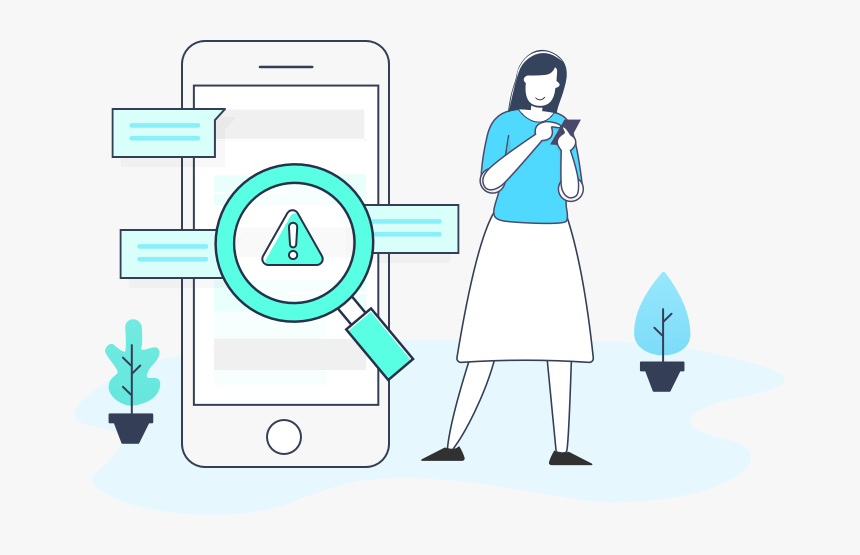
Evaluate The Risks
Businesses should look to maximize value while minimizing risk when engaging with an outsourcing model, by considering the risk and value associated with the people, process, and systems involved. Prioritizing your needs and evaluating the risks around is always give you the peace of mind you deserve, better safe than sorry.
Create a business plan
Outlining effective responsive communication plans
Set your business budget
Assess the geographical risks

Choose The Right Partner
Most outsourcing companies talk of vast expertise and top-notch talent, but is there any credibility to their words? Choosing the right partner can make boost your business to the greatest success or it can cause management, cultural, and other unseen issues. Here is a short checklist to be done without any further ado.
Communication & collaboration
Business reputation
Cost efficiency
Case Studies
Technical Expertise
Workforce evaluation
Check Infrastructure and technologies
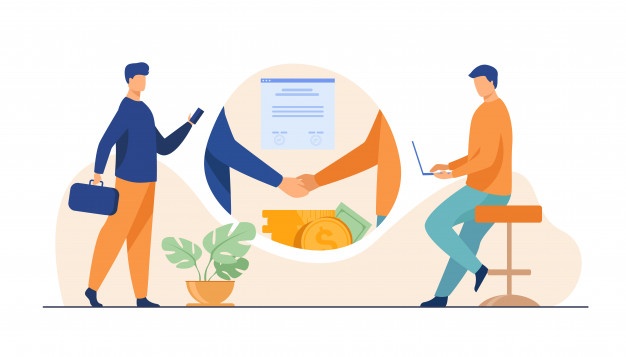
Set Routine Checks
Routine checks do not only make your business trackable but also help you to understand pain points, success stories, and sets the ground to become responsible for all your important business decisions consistently. Especially for outsourced workforces, creating routine control methodologies and reports will increase efficiency.
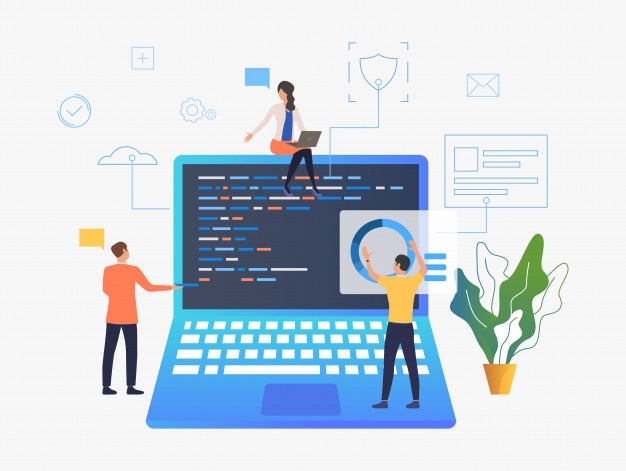
Ongoing Training And Employee Development
Providing training and development to employees allows employers to pinpoint the knowledge and skills they want their employees to have. Training and development programs can educate employees about new skills or provide updates on existing skills to enhance productivity. When you outsource your workforce, the employees will still be representing your company. Your outsourcing partner should understand this sensitive aspect of your and continuously provide required training to all employees.

Outsourcing offers companies the ability to focus on their main competencies and delegate essential tasks to others. This can move companies toward growth by investing more time for leadership to innovate. Outsourcing is a viable solution for all business models at any stage that are looking to scale their businesses and save money in the process.
You might feel overwhelmed by all the information, outsourcing is easy to manage and success-oriented model by choosing the right partner and can be a boost for your business mid-long term strategical plans.
If you are seeking an ideal outsourcing partner? Have more questions before ensuring your decision? Let our team guide and help you with your business success by contacting us.

Why 42% Of Customers Prefer Live Chat
A new breed of customers and B2B buyers are forcing companies to change how they communicate with them. The most challenging of all is that these buyers want to communicate with you fast and easily in real-time.
Leading a successful business means listening to what your customers want.
And in 2021 what they want is live chat.
One of the most effective ways to “chat” with customers is to meet them in a channel on your website via live chat. In independent research, 77% of consumers said they need to talk to a real person before making a purchase online.
In the digital age, competition and buyer empowerment have become stronger than ever, businesses are finally making customer needs and expectations their top priority. Today, more than 48% of customers expect live chat on your website.
Earlier this function was considered as an additional opportunity to phone and email contact but today it is a substantial part of support service that can not be ignored.
If your business strives to be up to date, it has to give customers the ultimate purchase experience. Live chat can generate leads, increase sales and improve the overall customer experience. In fact, live chat is expected to continue to grow by as much as 87% in the next year, and in some industries, chat growth has increased by as much as 150%.
The reason for this increased adoption is because more than half of all customers prefer to chat with someone in real-time and online, rather than contact a company for support.
Live chat enables you to reply to customers immediately. Without a doubt, the first and foremost quality customers demand is quick answers. A major reason why customers use live chat is to have their queries answered instantly, since delayed responses may cause you to lose interest in your brand. Indeed, live chat is an amazing way to connect with customers as well as strengthen their trust in your brand.
You don’t have to wait on email replies, no need to search for phone contact information and wait in line listening to launch music to keep your patience. You don’t need to fill in a call-back form and wait for customer support to reach out to you, hoping to receive the call while it’s still convenient for you to have this conversation.
Today, customers are literally one click away from a fast response of customer service, assisting in purchase or anything they need.
48% of customers say that they prefer live chat over social media, email, and even phone support. Giving customers a way to reach you immediately is beneficial for both parties, and let’s not forget about the convenience of data exchange using a chat.
Real-time messaging is great for onboarding, troubleshooting and nurturing customer relationships. When customers reach out, make sure to have an agent available, or at least include information about the average response time somewhere inside the chat window. You can also use pre-chat surveys, chatbots, and other options.
In fact, the average customer satisfaction using live chat service in the technology industry exceeds 87%. compared to just 61% for email and 44% for phone.
In addition to that, a study by AMA found that live chat can be used effectively throughout the customer journey, including an improvement in:
Brand awareness (+29%)
Early-stage sales development (+32%)
Post-sales customer support (+39%)
All of which leads to an increase in revenue!
Better customer experience through Live-Chat wrap up:
Leading a successful business in today’s society means using Live Chat to Boost Customer Satisfaction. Customers want a fast response and easy data exchange. Customer prefer this kind of communication over
- Phone
- Call back forms
- FAQ
- Social Media

Building The Future Of Connection With Lifelike Avatars.
The world is changing and technology adapts.
Facebook recently showed how their Codec Avatars project is progressing – the results are already impressive.
Lifelike avatars are the way we will communicate within the next 10 years.
These avatars show photorealistic face models that accurately represent the geometry and texture of a person in 3D (i.e., for virtual reality), almost indistinguishable from video.
Video communication and calls are outdated, while VR / AR should take communication to a fundamentally different level. It will have a huge impact on Customer Service – communication is key, imagine being in a meeting with a customer face to face while in real life you’re working from home. And Facebook invests a lot of resources in this: 10 thousand employees work on mixed reality projects, which is almost 20% of the entire state.
Zuckerberg also likes to say that the future of user interfaces is VR / AR.
Telegram and other Facebook competitors cannot be envied: no one has enough resources for 10 thousand people to be engaged in such a long-term project. But this is definitely the future.
In the video that you see here, a Facebook employee and a participant in the experiment communicate with each other in VR reality. Already much better than a few years ago, but there are problems with facial expression, tongue and eye contact. The goal is to create a virtual space that is indistinguishable from reality. It’s as if a person is standing next to you and looking right into your eyes.
In the future, companies that will use avatars will have a huge advantage over its competitors. Moreover, these technologies can eventually be integrated into our everyday lives.

Exceptional Customer Experience With Over-Delivering Customer Support Teams
“New Normal” is a great way to define the changing landscape of customer service.
Customers have always wanted efficient, quick, and reliable service, but new technology has raised their expectations even higher.
The Internet and especially social media changed the definition of fast dramatically. Consumers find faster, consume faster, and change decisions faster and they expect to get an immediate solution to their queries.
A simple Google Search can tell you about anything you need to know and almost instantly, and how to expect that consumers will be patient when company representatives can not give the valid and quick answer.
They still want to call and talk or text a real person, but more initiative than ever to find FAQ pages, forums to solve their problems themselves.
With the growing technology and channels, we are always on and connected to the information we need, watch, listen, connect wherever and whenever we want, everything expected to be easy and accessible 24/7.
It’s important to know where you stand in this standart. Most of the time, customers will let you know how you’re doing by giving you feedback.
By avoiding poor customer service, you are providing excellent service, which is what you want to do.

- Be available and answer emails/calls/tickets seven days a week. You can not solve a technical problem in a minute but you should let customers know, you hear them, you will have a solution in x amount of time and you are working on it.
- Make sure customers know how you can be reached.
- Treat the customer like the fellow human being they are, not like “just another customer.” Use their name, personal service matters more than speed.
- If you don’t have yet, quickly build a Knowledge Base as a tool for your customer support teams and publish in your channels as FAQ for them who prefer to solve their problems themselves.
- Over 65% of customers believe it is very important that they don’t repeat their previous interactions. Use accurate tools that help you to keep your customer inquiry records.
Did you know that 58% customers said their service expectations are higher today than they were a year ago? Nowadays It takes one bad service experience to reduce the loyalty of 68% of customers.
Nearly three-fourths of consumers will leave a brand behind after two poor experiences. Do you know how to build over-delivering customer support teams to lead in today’s new business environment?
Companies today are realizing that the technology, people, and processes they’ve developed over 2 decades will not be enough to help them address how customer needs have developed up to this point.
The data in this blog should help arm these service leaders with the information they need to evolve, and keep up-to-date with what it is their consumers want; otherwise they risk losing them to a company that will.

Onboarding, Training, Building Knowledge Base Definition For Small Medium-Sized Businesses
Organizations success is highly dependent on employee skills and performance and every new hire needs a certain level of training regardless of their role in the organization.
Training costs can go beyond a staggering $13 million dollars for large organizations. 99.9% of businesses in the UK (6 Millon), 99.7% in the US (28 Millon) are stated as SMB and these organizations are facing countless challenges in balancing training quality and costs.
Is there a way out of this dilemma, without sacrificing quality and within an affordable budget?

Knowledge base, a dictionary of ready to go information, the bible for trainers and employees. Consuming all relevant information for a new hire, all training material is one click away from anywhere and everywhere and you don’t have to worry about the term, jargons since the many Knowledge base tools offer context-sensitive features.
It is very easy to get drawn when you jump into an ocean of information, and we all experience those frustrations when the instructor needs to repeat something for clarification and this feeling is mutual for both parties.
The onboarding process starts over again with every single new hire and hiring never stops. The knowledge base can save time and energy and provides real-time visibility to training information, and flexibility of constant refresh to meet the new hires requirements.
Researches pointing that the average employee wastes 5 hours a week by searching the Finalupdatelatest. document. Mistakes can easily be done when it is almost impossible to verify if the source is the latest version, even the file name says so.

Researches pointing that the average employee wastes 5 hours a week by searching the Finalupdatelatest. document. Mistakes can easily be done when it is almost impossible to verify if the source is the latest version, even the file name says so.
Besides the training and onboarding purpose of building a knowledge base, it can also be a solution for hitting your Customer support KPIs and totally can bring your support level sky-high. You can make it easier for your customer service team to provide prompt service and information by using an internal knowledge base to gather common support documentation and FAQs. 90% of customers want an immediate response when they turn to you with a support issue. Use of help or FAQs on a company’s website increased from 67% in 2012 to 81% in 2015 regarding Forrester’s report. Publishing your FAQs on your web page can help you to avoid repeat requests from customers as well as deflecting 40% totally.
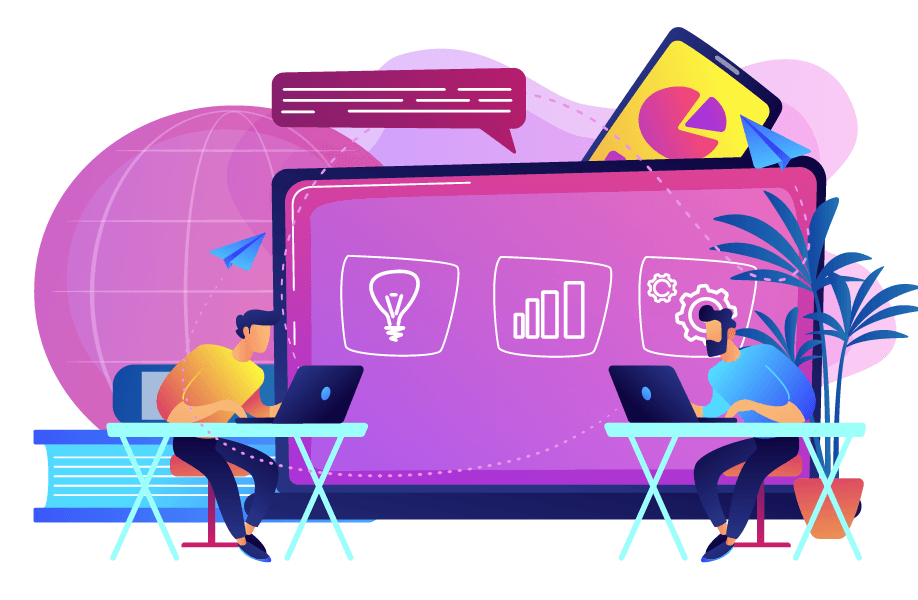
What to put in a knowledge base
- Annual reports, employee handbooks, organizational charts, and contact lists
- Onboarding materials, health-and-safety training, and certification training.
- Process documentation, software documentation, standard operating procedures, and checklists.
- FAQs, call scripts, and email templates that can help your customer support team better assist customers.
- Case studies, product information sheets, sales process information, and the latest sales numbers.
- Editorial calendars, social media post templates, and copywriting guidelines.
- Press releases, contact lists, and press images.
- Branding Handbook, and colour codes.
- Legal documents, contracts, release forms, policies, and regulatory documents.
You can find some excellent knowledge base examples below.
1. Optimizely
Optimizely’s knowledge base is huge, and it contains a community forum, a traditional knowledge base, an educational academy, certification programs, developer documentation, and a link to regular support.
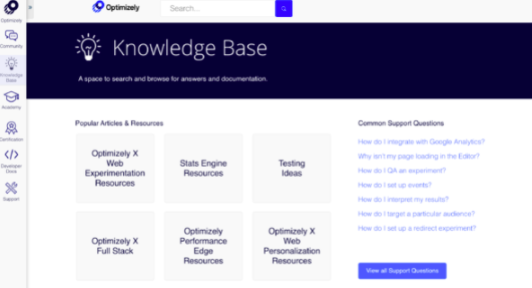
2. SurveyMonkey
When it comes to a knowledge base design template, SurveyMonkey has one of the best examples I’ve seen. It’s clean, beautiful, simple, and intuitive. I like the visually prominent search bar and the clear topic categories.

3. Microsoft
The next knowledge base example we have here does a great job of capturing and utilizing feedback.
The cool thing is that Microsoft has clearly done its research and analysis and has built the knowledge base homepage to reflect top user concerns.
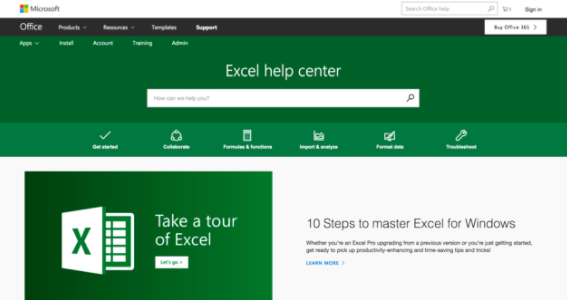
4. HubSpot
Hubspot knowledge base contains a bunch of different elements, including a documentation (for developers, designers, and general users), training (online, consulting, and classroom on a variety of topics), certifications, and a huge variety of community features (like forums, case studies, a customer blog, and more).

5. Moz
Moz is a stellar example of using knowledge base content not simply for reactive customer support, but for proactive customer education as well. They even refer to their knowledge base as a “learning centre,” which shows you how they’re framing their efforts.
